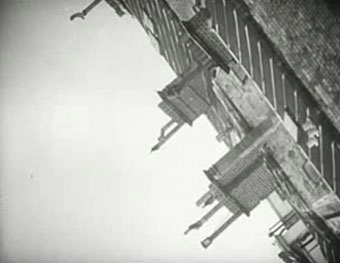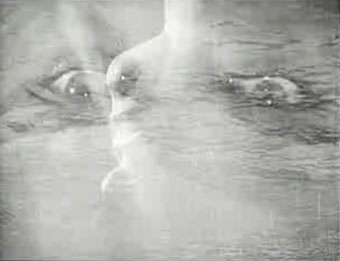One of the best—and most entertaining—films to come out of the Dada/Surrealist period, Entr’acte (1924) is also worth watching for the appearance of notable figures such as Francis Picabia (who initiated the project), Marcel Duchamp, Man Ray and Erik Satie.
This extraordinary early film from director René Clair was originally made to fill an interval between two acts of Francis Picabia’s new ballet, Relâche, at the Théâtre des Champs-Elysées in Paris in 1924. Picabia famously wrote a synopsis for the film on one sheet of note paper, headed Maxim’s (the famous Parisian restaurant), which he sent to René Clair. This formed the basis for what ultimately appeared on screen, with some additional improvisations. Music for the film was composed by the famous avant-garde composer Erik Satie, who appears in the film, along side its originator, Francis Picabia. The surrealist photographer Man Ray also puts in an appearance, in a film which curiously resembles his own experimental films of this era.
Entr’acte is a surrealistic concoction of unrelated images, reflecting Clair’s interest in Dada, a fashionable radical approach to visual art which relied on experimentation and surreal expressionism. Clair’s imagery is both captivating and disturbing, giving life to inanimate objects (most notably the rifle range dummies), whilst attacking conventions, even the sobriety of a funeral march.
Entr’acte can be watched and downloaded at Ubuweb. Tate Modern is running a major exhibition of the works of three of the participants, Duchamp, Man Ray, Picabia, until 26 May, 2008.
Previously on { feuilleton }
• Alexander Hammid
• Impressions de la Haute Mongolie revisited
• Short films by Walerian Borowczyk
• The South Bank Show: Francis Bacon
• Rose Hobart by Joseph Cornell
• Some YoYo Stuff
• Beckett directs Beckett
• Meshes of the Afternoon by Maya Deren
• Not I by Samuel Beckett
• La Villa Santo Sospir by Jean Cocteau
• Un Chant D’Amour by Jean Genet
• Borges documentary
• Film by Samuel Beckett
• Towers Open Fire



One thought on “Entr’acte by René Clair”
Comments are closed.